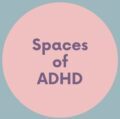About ADHD and women
Growing numbers of adult women are being diagnosed with ADHD. Awareness may be growing recently, but there is a distinct lack of research that looks as women’s experiences of living with ADHD. Women are thus marginalised in ADHD research, support, and societal awareness. Most of what we know about ADHD is based on the experiences of boys and men.
It is largely agreed that girls and women learn to mask certain symptoms and traits, while teachers and parents are less likely to suspect ADHD in a young girl than a boy.
The costs of this are extensive. Many girls very successfully make it through adolescent years (although struggles are still common) to find that their lack of diagnosis and support means that they are ill-equipped in adulthood to take on the wider range of responsibilities. Mental health disorders are common – the pressure to mask symptoms – core elements of the person – causing anxiety, depression, and higher rates of suicide.
Guides written by practicing healthcare professionals frequently note that their women patients struggle with home-organisation, tidying, keeping on top of appointments, and finishing tasks. Others note how hyperfixations can lead to the hoarding of things. Thus, while women may have forced themselves to adapt to societal pressures in education or the workplace, the home seems to be where the mask may fall.
Spaces of ADHD, therefore, turns attention to how women experience and wish to represent their relationship with ADHD in the home, in order to bring further awareness to this marginalised group.


Leave a Reply